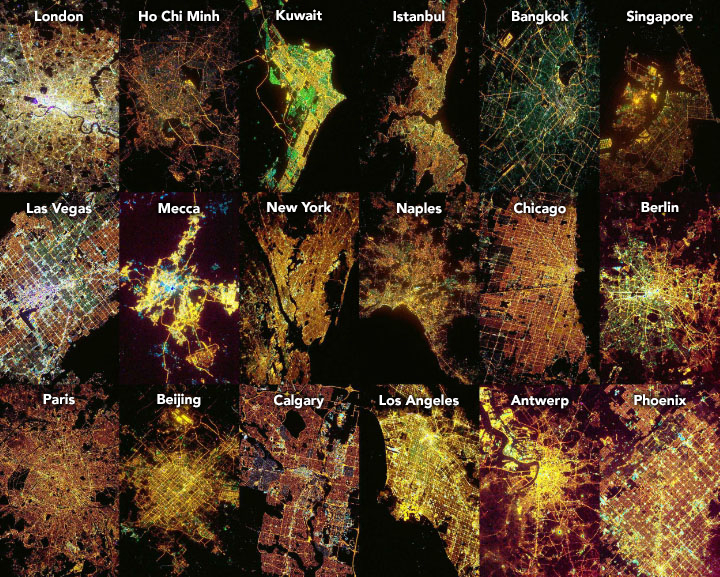Published on 15 November 2021
In the past 20 years, astronauts on the International Space Station (ISS) have shot millions of photographs of Earth. The collection offers more than just remarkable views of our home planet; it is a valuable tool for researchers. Christopher Small, of Columbia University, has found the nighttime images to be especially illuminating. By analyzing images of Earth at night, he is working to gain insight into how cities grow and evolve.
Small has been working to characterize the different types of lighting used across a variety of urban areas. Specifically, he wants to quantify things like the relative brightness, color, and areal abundance of different types of city lights. He has sorted through hundreds of photos of cities that were shot from the ISS, looking specifically for cities with lights in a wide range of colors and spatial configurations.

A mosaic of photographs of the world's cities, taken by astronauts onboard the ISS
The montage above shows 18 cities—from London to Singapore to Phoenix—with especially diverse nighttime lightscapes. The images are also relatively high in resolution: Each was shot with a 400-millimeter lens capable of resolving individual lights. Small then calibrated each of the images to have the same color temperature, so they could be compared directly. This montage was calibrated to 5500 Kelvin—about the same color temperature as sunlight.